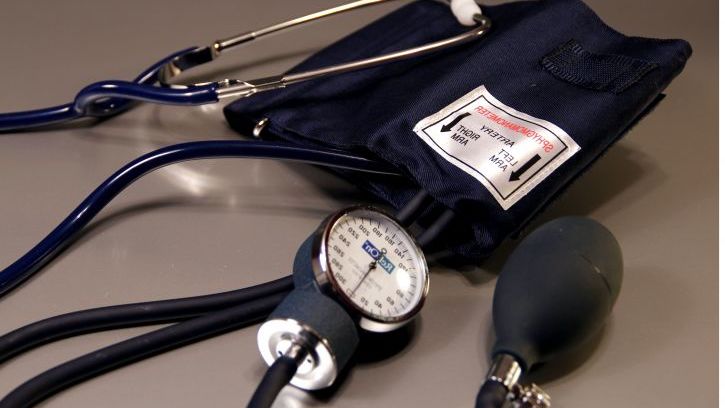Headache

Headaches are very common in the female population and are therefore common during pregnancy. Fortunately, for women who experienced headaches prior to pregnancy, research indicates these headaches are likely to improve, especially after the first trimester – including migraines.
A smaller percentage of women (about 35%) may experience headaches for the first time during pregnancy, or may experience a worsening of their normal pattern. Women should always call their health care provider (HCP) if this occurs.
While headaches during pregnancy can be a sign of blood pressure problems or preeclampsia, especially in the postpartum period, HCPs can usually tell the difference through a physical exam. HCPs can also offer management strategies to lessen pain and discomfort and may recommend certain medications when necessary.
Therefore, it is advised women call their HCP anytime they are concerned about a headache. If an HCP believes imaging is necessary, an MRI is usually the most recommended imaging method (depending on stage of pregnancy) as it does not use radiation.
Background
Headache is a common complaint in pregnancy (more than 35% of pregnant women) and can cause women a lot of anxiety when they are concerned about possible blood pressure, vascular, or preeclampsia concerns.
A headache can occur anytime pain is felt that appears to arise from the structures within the head such as the skin, muscles, and blood vessels, but can also include the neck and face. The prognosis and treatment of a headache depends on its cause; however, most are temporary and relieved through lifestyle changes or over-the-counter (OTC) medication.
Recent research has started to indicate that while headache is common, pregnant women who suffer from a headache disorder in pregnancy should be watched more closely for possible indirect complications.
Types
Headaches are classified as either primary or secondary:
Primary headaches are considered benign and are not the consequence of a predisposing medical condition. These headaches generally improve during pregnancy, pose no significant risk, and include tension-type headache, cluster headache, and migraine. Additional primary headaches include those caused by lifestyle factors such as dehydration or lack of sleep.
Secondary headaches occur as a result of medical conditions. The most common secondary headaches are preeclampsia and eclampsia, as well as (more rarely) stroke, cerebral venous thrombosis, subarachnoid hemorrhage, pituitary tumor, choriocarcinoma, idiopathic intracranial hypertension, and reversible cerebral vasoconstriction syndrome.

Pregnant women with a headache can be categorized into three groups:
Women with a known primary headache disorder presenting with their typical headache
Women with a known primary headache disorder presenting with a headache different in character from their typical headache
Women presenting with a new onset headache
Headaches can be challenging to assess during pregnancy. Women who see their HCP for a headache should be prepared to give a detailed history of their headaches – or a lack of history – which can help the HCP determine a path forward.
Primary Causes
Headaches in women can be triggered by a change in hormones during pregnancy and the body’s attempts to adapt to those fluctuations.
Due to women responding differently to hormones, pregnant women can experience an increase or decrease in their headache pattern, or no change at all. However, research indicates most women will likely notice their headaches either go away or greatly improve in the second and third trimesters due to a stabilization of hormones.

Primary (benign) headaches in pregnancy can also be caused by:
Rapid changes in blood volume
Stress, fatigue, and eyestrain
Hunger and low blood sugar
Caffeine withdrawal
Women may find that keeping a journal of their headaches to determine what could potentially be triggering them may be helpful. It is possible women cannot identify a trigger, and therefore it is likely hormones or other pregnancy-related changes are the cause (or a combination of factors).
Tension-Type
Tension-type headaches (TTH) are the most prevalent type of headache during pregnancy (about a quarter of all headaches) but are the least well-studied.
TTH typically cause pain, tightening, and pressure on both sides of the head. TTH is not worsened through physical activity, has no aura (as seen in migraines), and is usually not associated with nausea and/or vomiting; however, it can cause sensitivity to light and sound.
In studies that have evaluated tension headaches during pregnancy, most of them show significant improvement with very few worsening; some authors believe tension headaches never worsen during pregnancy. This is assessed due to female hormones that regulate serotonin and endorphins, which are primary causal factors of TTH.
TTH poses no risks of complications during pregnancy. It is recommended that women who do suffer from TTH take acetaminophen for pain, the first-line pain reliever during pregnancy.
Cluster
Cluster headache (CH) is an uncommon headache syndrome during pregnancy (0.3%) characterized by headache attacks that occur with a regular periodicity. The pain is described as intense, stabbing, and highly debilitating, usually located on one side of the head above the eye or near the temple. These episodes can occur up to eight times in one day and are also associated with eye redness and tears, runny nose, and pupil constriction.
There is very limited information on cluster headache (CH) during pregnancy, and information that is available is conflicting; however, research does appear to indicate that in women who suffer from these headaches prior to pregnancy, their attacks will likely remain similar. Female hormones appear to have little effect on them (males often outnumber female sufferers 9 to 1).
First-line treatment for CH attacks during pregnancy is high flow oxygen, which can significantly reduce pain within 30 minutes.
Sumatriptan is also effective in combating CH, but it’s safety profile during pregnancy is not clear; intranasal lidocaine may also be an option for some women. Women who suffer from CH during pregnancy need to talk with their HCP about their treatment options, to include their neurologist.
Migraine
Migraines are considered a separate entity from other types of headaches and can range in severity from mild to utterly debilitating; they can last in duration from several hours to two weeks or more. Fortunately, almost three-quarters of women who suffered from migraines prior to pregnancy will have significant relief, if not complete relief, during pregnancy. Read more.
Preeclampsia/Eclampsia-Related
Severe headache is considered an emergent sign of preeclampsia and/or eclampsia during pregnancy, especially when accompanied by high blood pressure.
Headaches are noted in up to 75% of all women with either disorder and in severe cases, precedes a seizure. It is also the most common symptom in postpartum eclampsia, occurring as soon as one week after delivery.

Among pregnant women with no history of headache, and those who call their HCP due to a new onset of headache, it is estimated that one-third have preeclampsia.
In women with eclampsia who suffer a headache prior to a seizure, the headache is described like a migraine: pulsating and throbbing in character, sensitivity to light and sound, and accompanied by nausea and/or vomiting. It is usually on both sides of the head (migraine is usually on one side), gets worse with physical activity, does not respond to OTC medication, and can also include vision changes typical of an aura.
Women should call their HCP immediately or seek emergent care if they experience:
Severe pounding headache
Dizziness
Blurred vision
Flashing lights
Nausea and/or vomiting
Swelling in hands, face, legs, or feet
Any time a woman experiences a severe change in her headache pattern, especially after 20 weeks, she needs to call her HCP for an assessment.
If women suffer from a severe type of headache described above but preeclampsia and eclampsia have been ruled out, it is recommended these women see a neurologist to look for possible secondary causes (described above).
Management – Overview
Women should always speak to their HCP about any headaches they experience that affect their daily lives. Untreated and unmanaged headaches can lead to stress, loss of work, sleep deprivation, and depression.
In most cases, an HCP can diagnose the type of headache through a physical assessment and good medical history. Imaging is recommended in women who complain of severe headache, seizures, or who have an abnormal neurological exam. An MRI or CT scan are usually the imaging methods of choice.
Lifestyle and behavioral modifications can help prevent and relieve headache pain and are often recommended prior to or in conjunction with medication (see Action section). Examples include aromatherapy, cognitive behavioral therapy, exercise, relaxation, and/or massage therapy as well many others.
Acetaminophen is considered the safest option to treat mild-to-moderate pain during pregnancy and breastfeeding, including headaches.
Women may also have several other pharmaceutical options, such as ibuprofen, antihistamines, metoclopramide and diphenhydramine, and codeine. However, as stated above, safety information is very minimal for several of these options and women should always talk to their HCP before taking any medication.
Action
A study published in August 2021 indicated that ideally, "women with migraine and problematic headache disorder should be offered preconception counselling to address pregnancy-related concerns and advice on the use of medicines [and lifestyle recommendations], which should be supported by high-quality information."
The best lifestyle recommendations for the prevention and management of primary headaches appear to be: routine physical activity, appropriate hydration, regular eating and sleeping habits, reduction of stress, and the avoidance of known headache triggers, which vary among women.

It is commonly recommended that women with a headache should drink more water to relieve pain, especially since dehydration is a common trigger. However, additional fluid intake will only relieve a headache that is caused by dehydration and will likely have no effect on a headache caused by other factors.
Further, it is recommended that any time a woman experiences a severe change in her normal headache pattern, especially after 20 weeks, she needs to call her HCP for an assessment.
Women should also consider sharing and submitting their experience below regarding headaches during pregnancy. This can help other women learn additional perspectives regarding this concern as well as potential management tips and how to talk to their HCP.
Partners/Support
Partners/support should read the page above and learn to recognize the signs and symptoms of a headache during pregnancy that require the attention of an HCP. A woman with a severe headache may not be able to fully communicate, and partners may be the first, in some cases, to recognize the woman needs medical attention (such as noticeable swelling in her face).
Most headaches during pregnancy are benign, and will go away with lifestyle changes or medication. However, as preeclampsia becomes more common, recognizing a headache that may indicate possible preeclampsia or eclampsia can prevent delay in diagnosis as well as serious complications.
Partners/support should also remember this can occur in the first weeks of the postpartum period. Although headaches after delivery may also be caused by dehydration, stress, lack of sleep, and fatigue, partners/support should ask the woman to describe the headache, keep a possible log, and tell her to indicate if the headache gets worse, or if she experiences any of the sign/symptoms described above.
Resources
Migraine and Other Headache Disorders (American College of Obstetricians and Gynecologists)
Slideshow: Headaches in Pregnancy: Before, During and After (start at slide 7) (Robert Kaniecki, MD, Director, University of Pittsburgh Medical Center Headache Center)